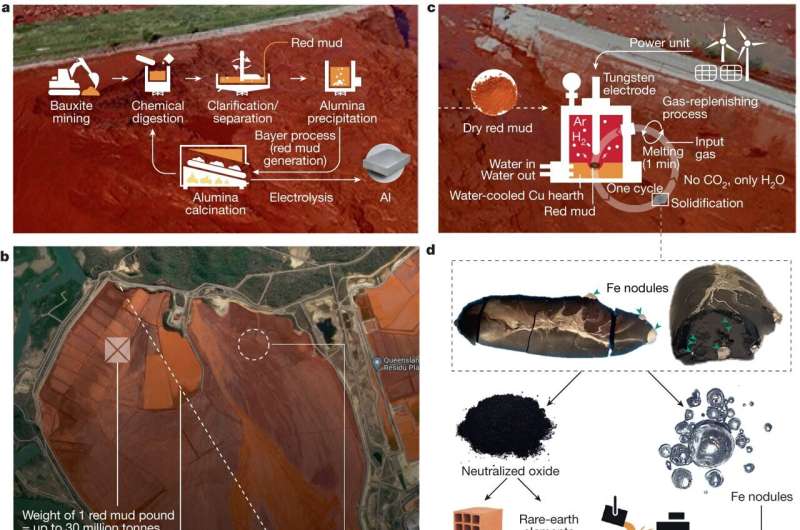
A team of metallurgists in Germany has developed a technique for extracting iron from aluminum production waste. In their paper published in the journal Nature, the group outlines their process and its degree of efficiency. Chenna Rao Borra, with the Indian Institute of Technology Kharagpur, has published a News and Views piece in the same journal issue outlining the work by the team on this new effort.
Aluminum is one of the most produced metals in the world, providing a basic ingredient for a host of products, but it also has a high environmental cost—production of aluminum generates a kind of sludge called “red mud,” a type of bauxite residue.
Each year, approximately 180 million metric tons of red mud are produced around the globe, resulting in the creation of multiple reservoirs that collectively hold 4 billion metric tons of the hazardous material—it is highly alkaline and contains a high concentration of heavy metals.
Prior research has shown that red mud can be used as a building ingredient, but to date, such use accounts for just 3% of all red mud produced. In this new effort, the research team found a way to partially clean up red mud by removing the iron.
To remove the iron, the researchers developed a special chamber that exposed the material to hydrogen plasma for up to 15 minutes. This initially converts the red mud to a viscous melt. Over the following few minutes, it is then reduced to liquid iron and steam and the liquid iron is shunted out as globules.
The research team has already carried out a cost analysis of the process and has found it to be economically viable when scaled up, though they note a pilot-scale facility is required to verify their projections.
Notably, in addition to reducing aluminum production waste, the iron produced from the red mud could be used to make steel. The team notes also that the technique requires augmentation before scaling up, such as processing the fumes that result.
